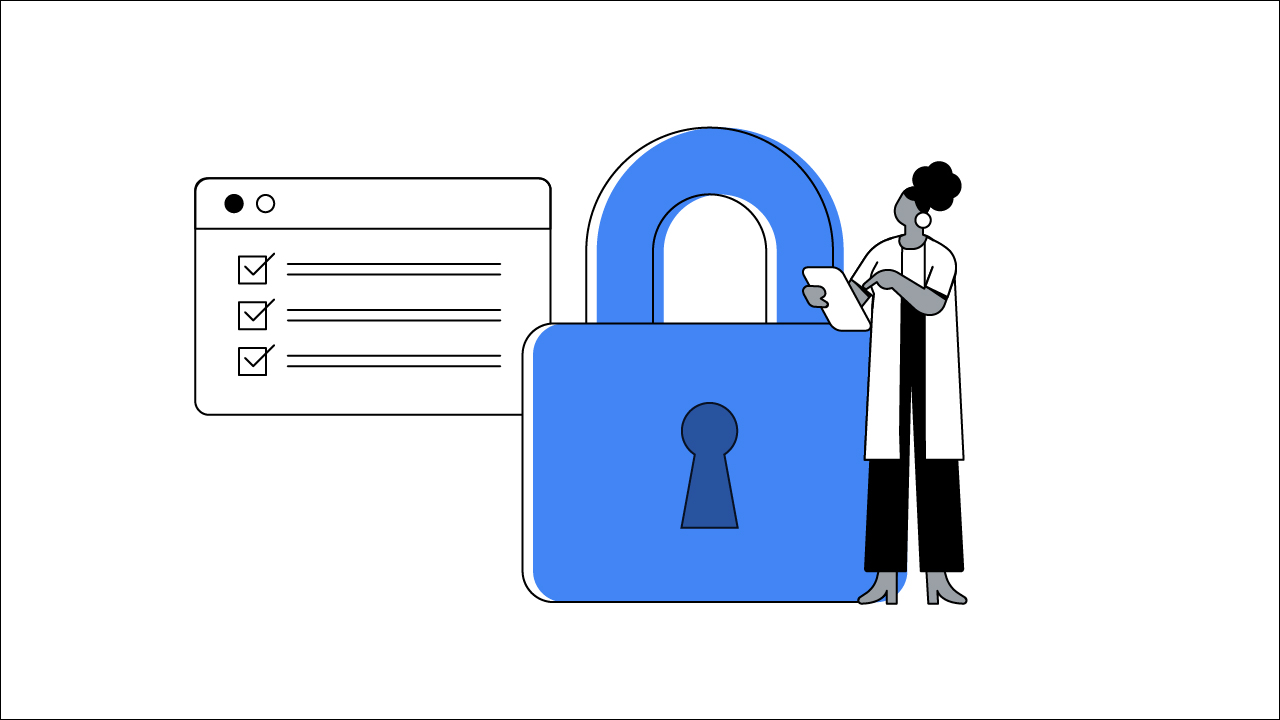
When your customers feel in control of their data, they trust your brand with their data. When customers trust your brand, they prefer to do business with your brand.
At Google, we worked with Ipsos to test examples of several online privacy practices marketers can use on websites and apps to help visitors feel more in control of their data.
We tested the options — including website pop-ups and emails — in hypothetical scenarios with more than 10,000 people across Europe. We then analysed the results to find out what worked for people, and what didn’t.
Here’s what we found:
The privacy practices you should adopt now
Action: Put customers in control and let them choose how they want to be reminded of their privacy settings — and how often.
Our research showed that people felt 14% more in control when they were able to set privacy reminders on the websites they visited.1 As you can see in the hypothetical pop-up window below, website visitors are asked to choose whether they want a privacy reminder via email or website pop-up, and they can easily set the frequency of this reminder. This simple pop-up was the most effective privacy practice we tested, by a considerable margin.
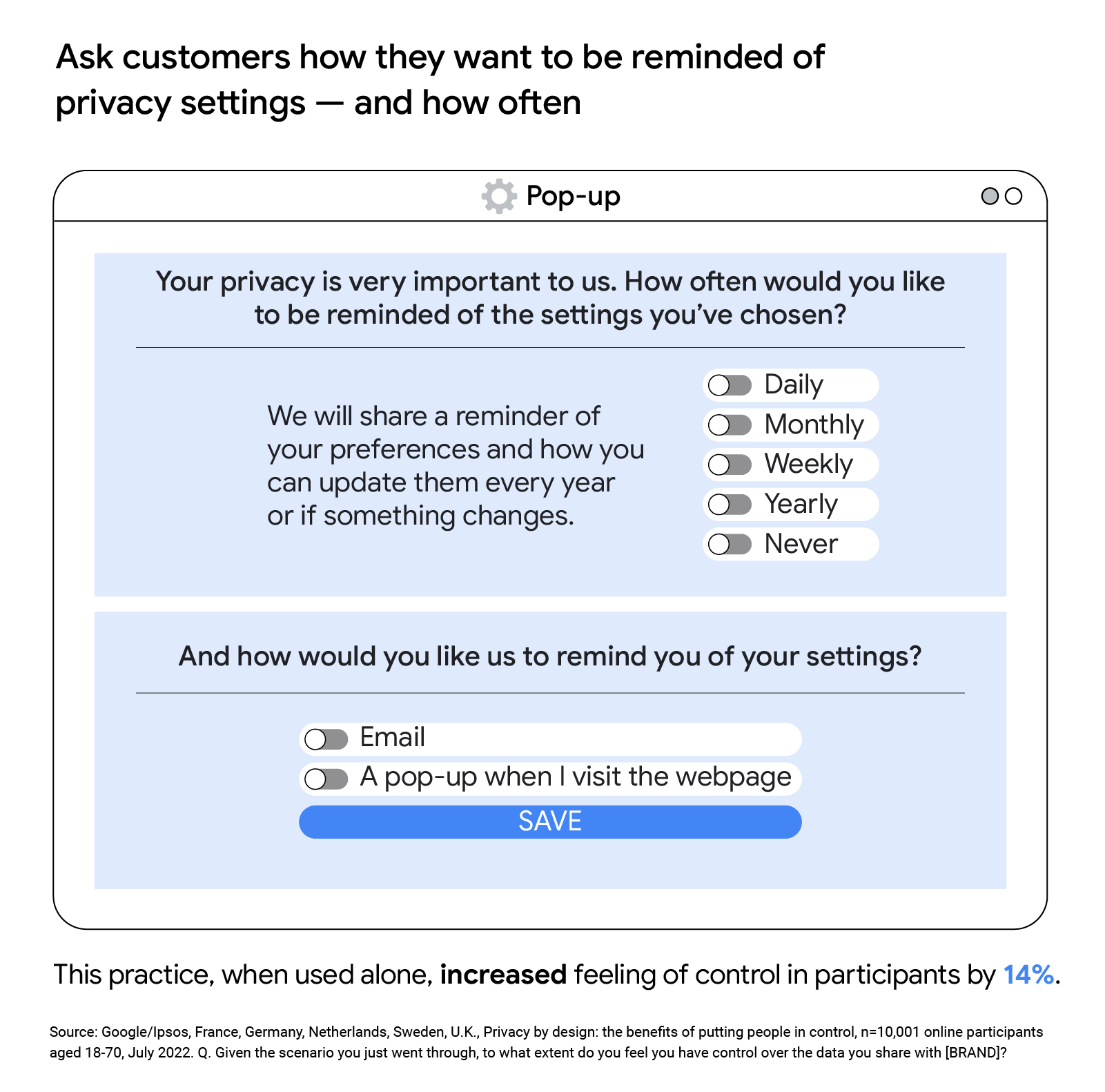
Action: Make privacy easy to understand and memorable by sending customers an email summarising their choices and inviting them to change their preferences.
It can be easy to forget what you have agreed to in a pop-up on a website. Marketers should consider sending an email to customers that summarises the data they agreed to share. The email should also offer customers an opportunity to change their settings. In our hypothetical scenario, this practice, shown in the example below, increased feelings of control by 9%.2
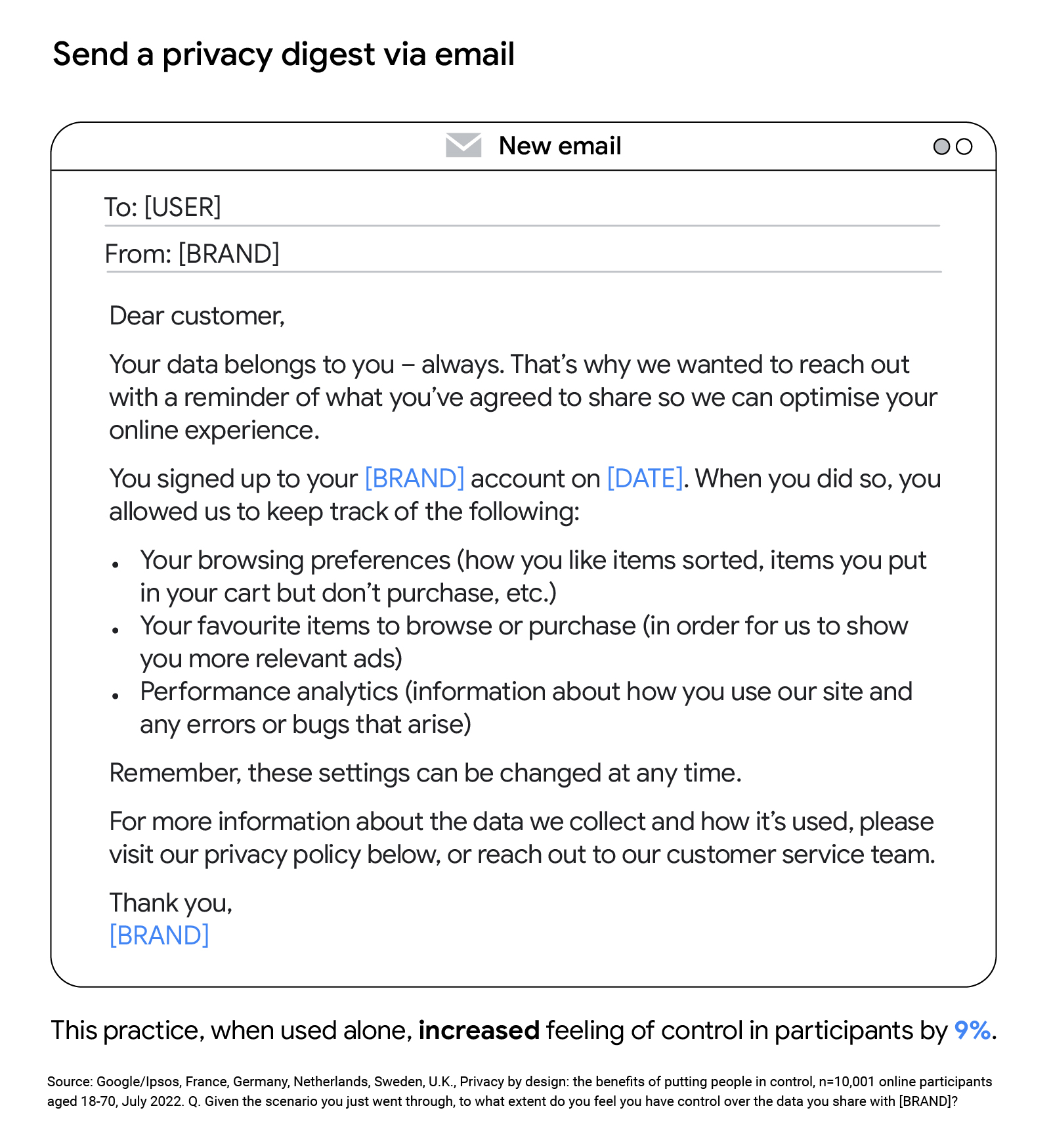
Action: Use clear and simple language to ask for customer consent and explain the benefits of personalisation.
Asking for customer consent to personalise a website is already a legal requirement in many jurisdictions. However, our research confirmed brands benefit from doing this. Marketers should seek permission to remember a customer’s preferences, and explain that content will be tailored to their needs. In our research, this practice, as seen in the example below, increased feelings of control by 8%.3
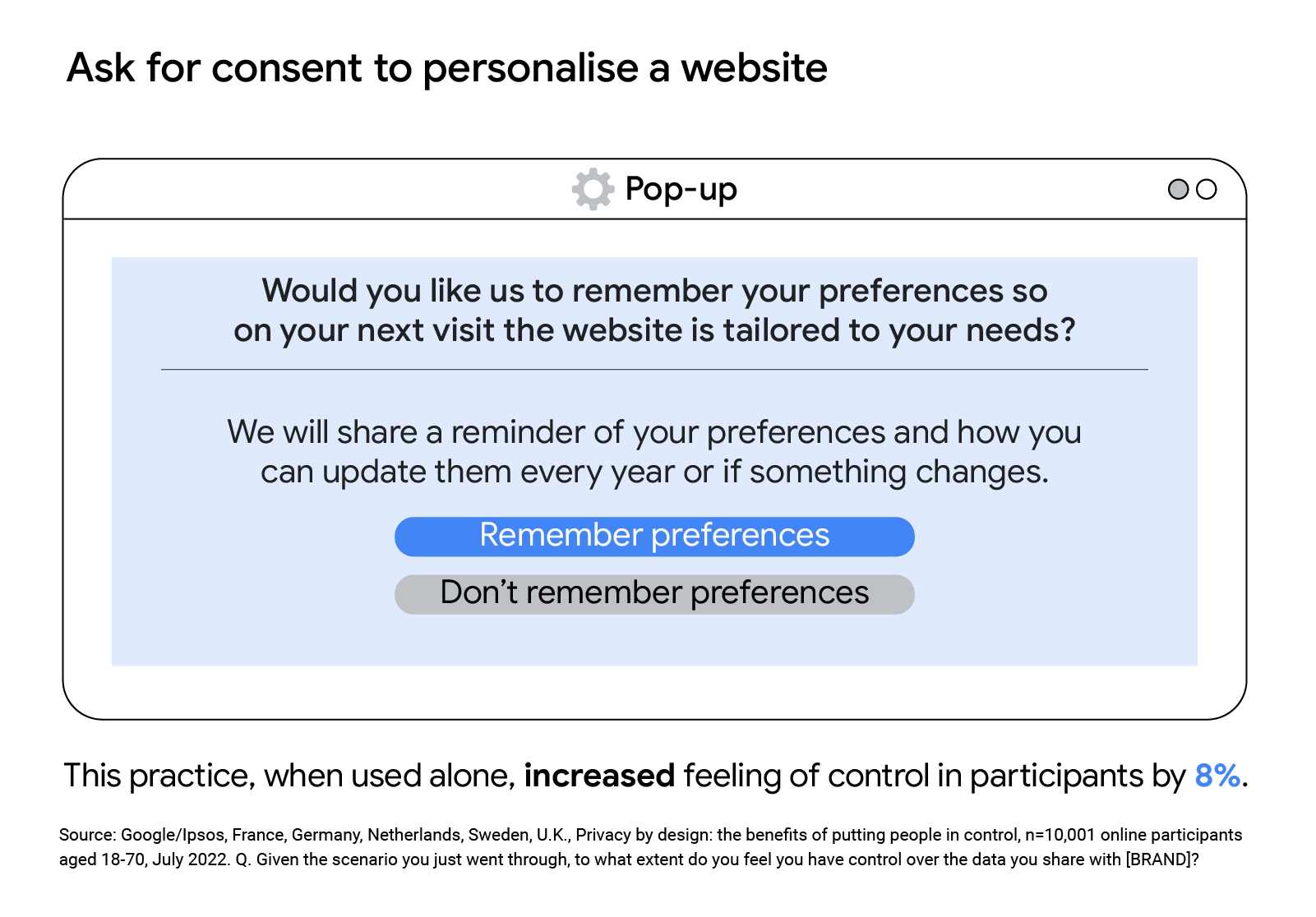
Privacy: Greater than the sum of its parts
When customers feel in control of their data, they experience significant increases in trust and brand preference.4 These privacy practices are effective in building that brand preference. They are even more effective when used in combination with each other, producing a ‘multiplier effect’. Our research found that using all three of the above privacy practices together increased people’s feelings of control by 37% — more than the sum of the three practices deployed separately.5
Combining these leading privacy practices also helped improve marketing effectiveness. Research respondents said they felt significantly more positive when they saw an ad or offer from a brand that used these privacy practices. They also said the ad or offer was more relevant to them, and they trusted the brand more with their data.
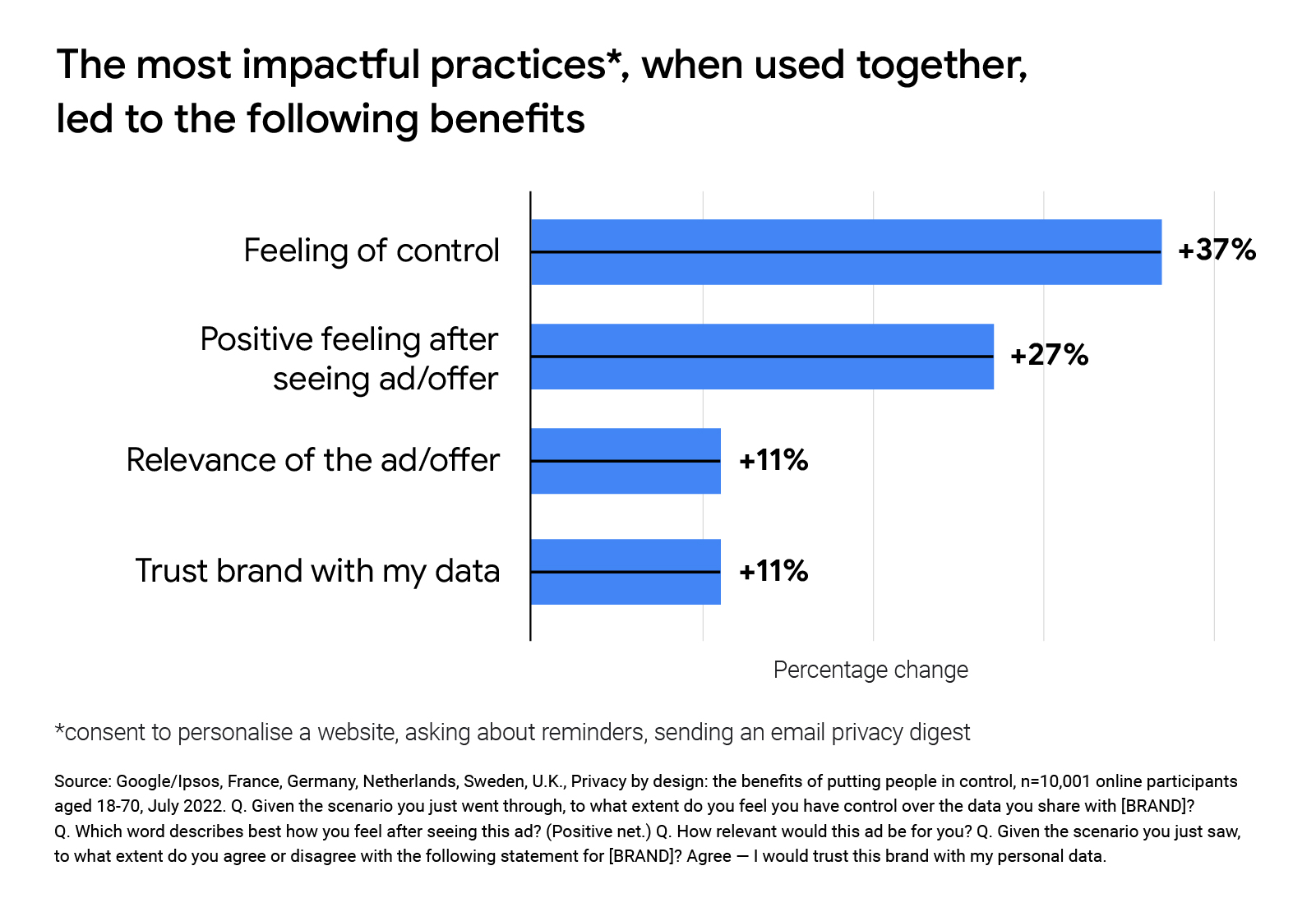
More action marketers can take
Here are five other examples of online privacy practices we tested in our research, which all boosted people’s feelings of control. Take a look at the drop-down options:
Privacy practices to be wary of
In our research, we came across some unexpected results for certain privacy practices. In fact, this pop-up, reminding people that a website had been optimised, reduced people’s feelings of control over their data by 2%.6
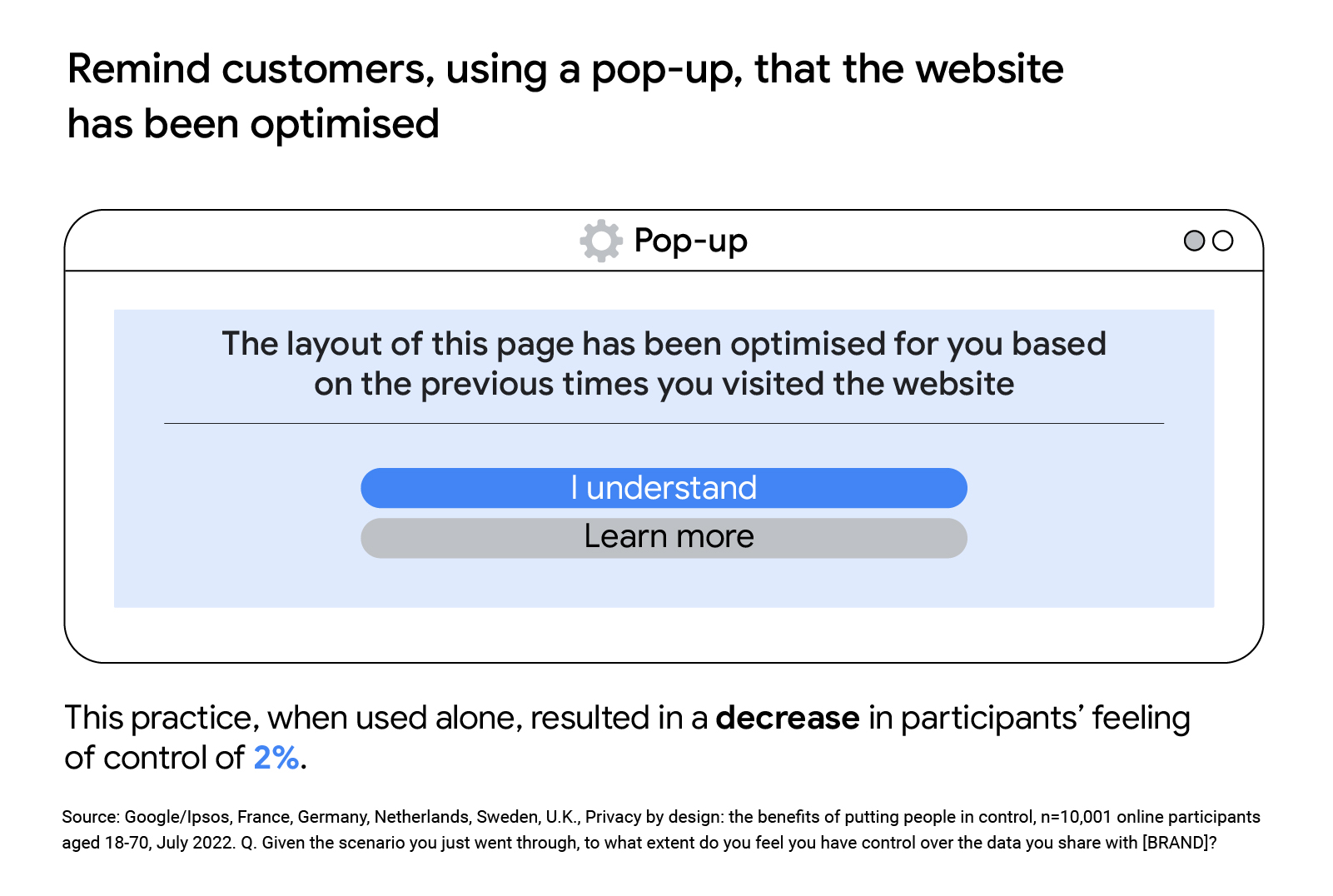
There are other strategies brands use in tandem with their privacy practices that may seem appealing, but are in fact ineffective. For example, in one hypothetical scenario we included a monetary incentive, such as a discount, to encourage customers to share their data. But customers were not swayed by this offer — in fact, some said they would trust a brand less because of it.7






